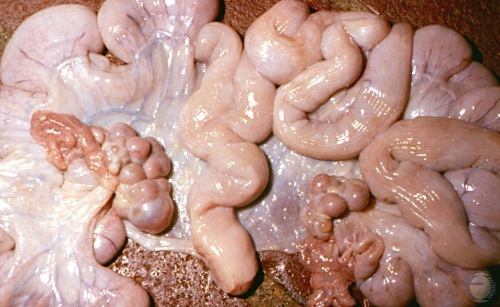
Hydrosalpinx.
The left oviduct is blocked leading to distension (hydrosalpinx) in a pluriparous sow, likely due to adhesions.
Drost M (1977)
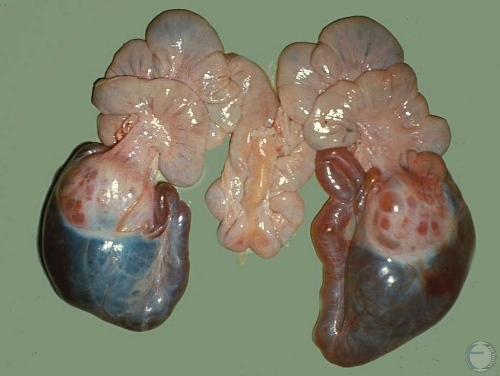
Bilateral Hydrosalpinges.
Both uterine tubes (oviducts) are grossly distended with fluid. The ovarian bursae are also sealed off (adhered) and distended with blood tinged fluid. This group of gilts were treated as babies with intraperitoneal IP) injections. The blood tinged fluid is the result of oviductal fluid spiked with hemorrhage from ovulations. The gilts cycle but do not conceive.
Evans LE (2009)

Severe Hydrosalpinx.
Both uterine tubes (oviducts) are grossly distended with fluid. The ovarian bursae are also sealed off by the adhered fimbriae and distended with oviductal secretions. Possible etiology is peritonitis.
Evans LE (2009)
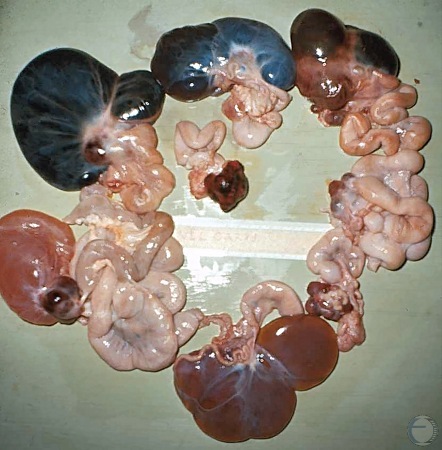
Hydrosalpingitis.
Multiple tracts from gilts sent to slaughter due to infertility. About 50% had severe hydrosalpingitis. All had received intraperitoneal sulfa injections as babies to prevent diarrhea.
Evans LE (2009)
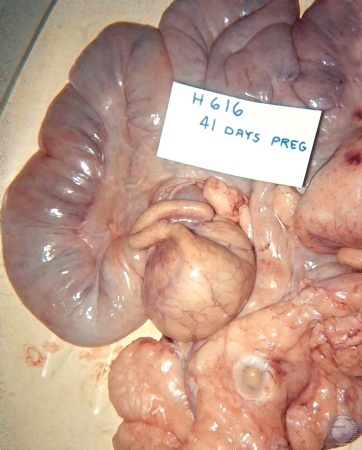
Pyosalpinx in a Pregnant Sow.
Pyosalpingitis in a pregnant sow bred with Staphylococcus aureus contaminated semen.
Evans LE (2009)
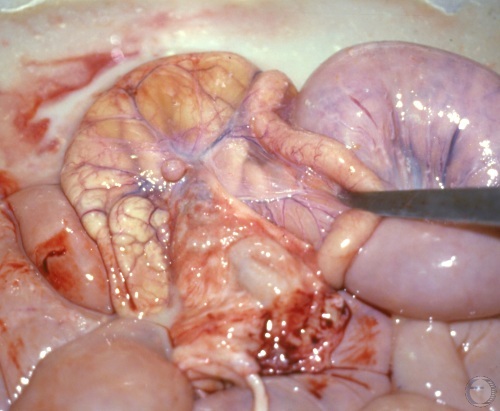
Pyosalpingitis in the Sow.
There is a distension of the oviduct with pus. The uterus also appears to be distended with pus.
Shipley C (2006)
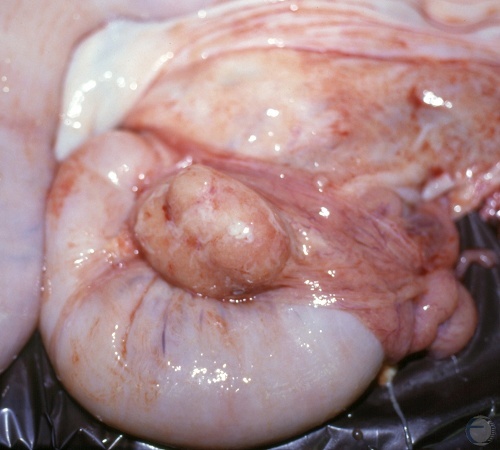
Pyosalpingitis in the Sow - Close Up.
Distension of the oviduct and the uterus with pus.
Shipley C (2006)
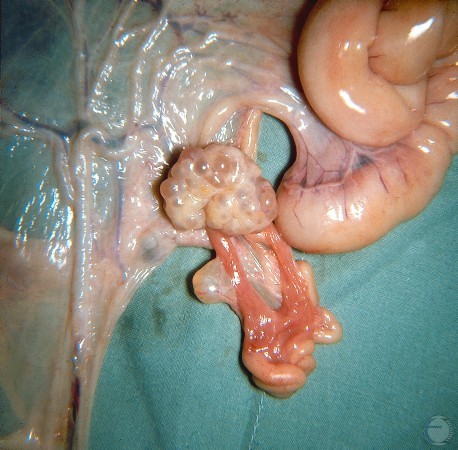
Fimbrial Cyst.
Mesonephric duct cyst in the fimbriae of the ovarian bursa. The cyst does not occlude the oviduct so there is no effect on fertility.
Evans LE (2009)

